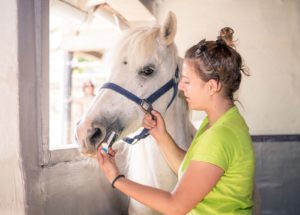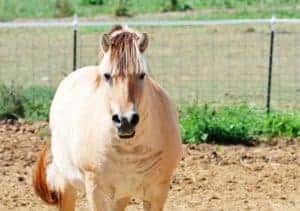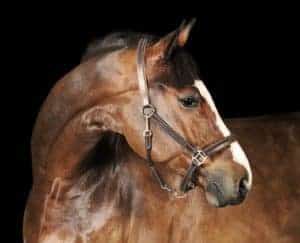
Bute vs. Firocoxib: Which NSAID Results in More Severe Gastric Ulcers?
Both NSAIDs induced GI tract inflammation, but phenylbutazone might result in more severe inflammation in the lower GI tract.

Both NSAIDs induced GI tract inflammation, but phenylbutazone might result in more severe inflammation in the lower GI tract.

Adjusting a horse’s environment and administering medications as needed can help some asthmatic equids return to function.

The modern horse’s dentition results from millions of years of evolution in response to changing food sources and climates. Likewise, how veterinarians treat today’s equine teeth must evolve and improve constantly.

Veterinarians retrieve most foreign bodies from the mare uterus manually; however, more challenging cases, might benefit from the use of hysteroscopy tools and equipment.

Equine recurrent uveitis, or ERU, remains a timely, expensive, and unrewarding disease to treat due to recurrence, loss of vision, and loss of use.

Changes in the diameter of the caudal vena cava (a large vein that returns blood to the heart from the back half of the body) during respiratory cycles could be used to evaluate fluid volume in foals, researchers found.

There are six main classes of corneal ulcers in horses that veterinarians must consider and properly diagnose to institute appropriate therapy.

Horse owners might want to have their mares’ ovaries surgically removed for a variety of reasons, including to prevent pregnancy, get rid of tumors, or, most commonly, resolve behavioral issues.

Amnion, the relatively thick innermost layer of the fetal tissues, contains numerous biological molecules that promote tissue growth and improve wound healing, researchers say.

The earlier you can detect endocrine conditions such as PPID and EMS, the better chance you have of preventing associated laminitis in affected horses.

Consider these dietary changes to help reduce the laminitis risk and discuss with your veterinarian whether certain medications could help your horse.

Funtional electrical stimulation, or FES, might help reduce back pain in horses with asymmetric multifidi muscles, researchers found.

Vaccinating mares against the polysaccharide poly-N-acetyl glucosamine appears to effectively protect foals against R. equi pneumonia, researchers found.

Thoroughbreds conditioned on water treadmills increased both their VO2max and speed.

If surgery requiring general anesthesia must be performed on pregnant mares, the safest time window is Days 40-220 of gestation, researchers concluded.

Researchers found that many horses not diagnosed with neck pain had bony changes in the cervical spine.
Stay on top of the most recent Horse Health news with
© 2022 Copyright Statement dolor sit amet, consetetur sadipscing User Terms, sed diam nonumy eirmod tempor invidunt ut labore et dolore magna aliquyam erat, sed diam voluptua. At vero eos et accusam et justo duo dolores et ea rebum. Stet clita kasd gubergren, no sea takimata sanctus est Lorem ipsum dolor sit amet.
"*" indicates required fields